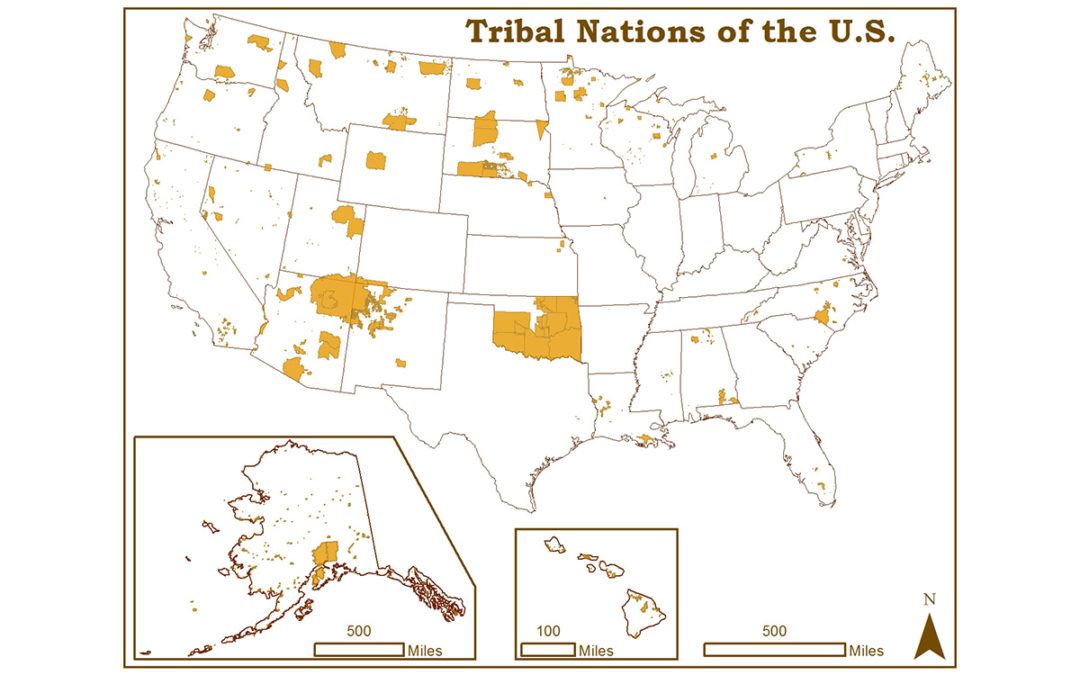Brandy Toft, Environmental Deputy Director, Leech Lake Band of Ojibwe
St. Croix, Bay Mills, Grand Traverse, Bad River, Ho-Chunk, Keweenaw Bay, Leech Lake, St Croix, St Regis Mohawk, Nez Perce- just a few of the Tribal Nations that are taking radon to task. Tribes are quietly working on radon for the protection of their citizens.
Of the 35 Tribes in Minnesota, Wisconsin, and Michigan, 19 have performed or are currently engaged in radon activities. Surprising? You may not have known because Tribes typically do their work without much fanfare, just heads down and hard work. Their style can have a downside, as many people may not be aware, that the Tribes doing radon work would make great partners or can contribute much to the ongoing radon conversation.
Only 15 of the 35 MN-WI-MI Tribes (43%) receive EPA funding for air quality work, and just four of those (11%) receive radon specific funding through the State Indoor Radon Grants (SIRG). In context, fewer than 2% of 574 Tribal Nations received SIRG funding in 2020 even though many more perform radon work. Every EPA Region receives funding for SIRG, but in discussions, most Tribal air quality professionals were not aware of radon specific funding via EPA or how to apply.
Tribal Radon Leaders: Profiles
Environmental Outreach Specialist for the Nez Perce Tribe, Johna Boulafentis, has worked in air quality (AQ) for years, branching out to focus on radon in 2020 with the Tribe’s first SIRG grant. Nez Perce felt it was the natural progression to shift the focus to radon and protect Tribal members’ health. Attending the Radon Symposium in 2017 as an invited presenter and then as an attendee in 2020, Johna enjoyed both conferences and gained much-needed knowledge. During the virtual format in 2020, she made multiple networking contacts that have proven useful. She has formed newfound respect for how much knowledge and work radon entails and people’s dedication to radon reduction. She plans to work closely with the Tribal housing office to combat radon risk jointly. “SIRG provided an opportunity for our Air Program to grow in capacity and to protect the health of our Tribal members further that we wouldn’t have been able to otherwise.”
Dan Wiggins, AQ Technician with the Bad River Band of Lake Superior Chippewa, started his radon work in 2007 with SIRG funding. Dan believes the recognition of radon-induced lung cancer and its interlinking with environmental tobacco smoke both need to be addressed to combat lung cancer. His first home mitigation, with a reading of 32 pCi/L, sparked his drive to continue radon work. However, SIRG funding could not pay for the mitigation, and he had to struggle to finance the project. Ultimately, the Tribal leadership supported this initial pilot project. With the threat of COVID forcing people to stay inside more, he is worried that it is more critical than ever to focus on indoor air quality (IAQ). But due to a potential decrease in funds from both internal and external sources, radon may not get the focus it deserves.
“Without SIRG funding, we would not be able to have a Radon Program or staff
to manage it. We need to continue to build capacity and grow programs.”
-Dan Wiggins
There is a need for more radon resources, education, connections, and networking. For years, Tribal Radon Programs have been advocating to increase radon awareness, broaden resources for Tribes, and strengthen relationships with CRCPD and AARST. However, time, funding, and resource constraints limit participation in events and memberships. Tribes typically apply what little radon funding they have to perform radon testing and mitigation.
MN-WI-MI Tribes disseminate information through the Tribe’s annual Tribal Air Resources Journal (TARJ) circulated among Tribes, federal and state agencies, organizations, and the business community to create awareness on air quality work in Indian Country. Tribes are great partners and experts in reaching out to their communities and finding ways to get projects done with so little. https://tinyurl.com/y6ccxltk

